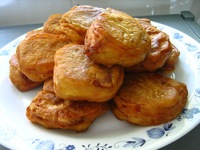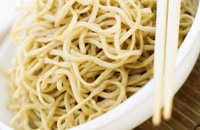While the Western New Year has come and gone, China’s celebration is just getting started. The Year of the Ox arrives on January 26th, kicking off two weeks of celebration—with, of course, requisite feasting and traditional fare.
Although menus will vary between different parts of China, New Year’s dinner is a particularly traditional and symbolic affair. On the menu might be dried oysters or whole fish to bring good luck, and cooked seaweed for prosperity. Long noodles are eaten, as in the Japanese tradition, to bring long life. Dumplings (jiao zi) are said to symbolize golden ingots and therefore bring wealth—in fact, during this time of the year, some call them yuanbao, the traditional Chinese currency.


Foods are also given as gifts or left on display. Tangerines, often with the greens still attached, are said to bring luck, and their leaves, prosperity; another citrus, the pomelo, is also lucky due to the similarity of its Cantonese name and the Cantonese word for “prosperity.”
And, of course, no celebration is complete without sweets. Nian gao is a sticky cake formed from a rice-based paste similar to mochi—pan-fried or otherwise heated, it is said to appease the Kitchen God for the year to come. Alternatively, gok jai are little pastry crescents filled with peanuts, sesame, and sugar, fried to that all-important golden brown.
Whether or not fried food, fish and oysters, and yard-long noodles will bring luck is anyone’s guess. That they constitute a memorable feast, however, seems far more certain.